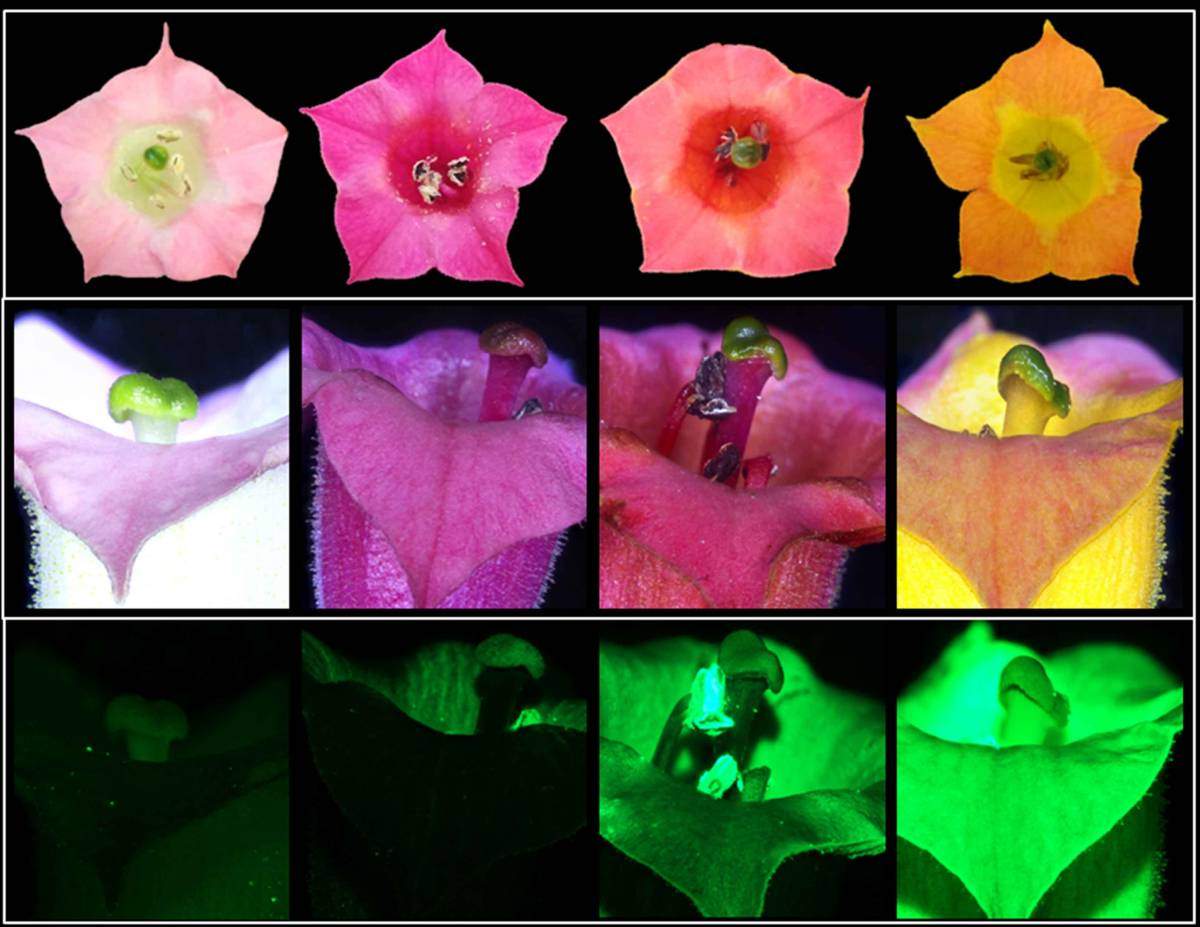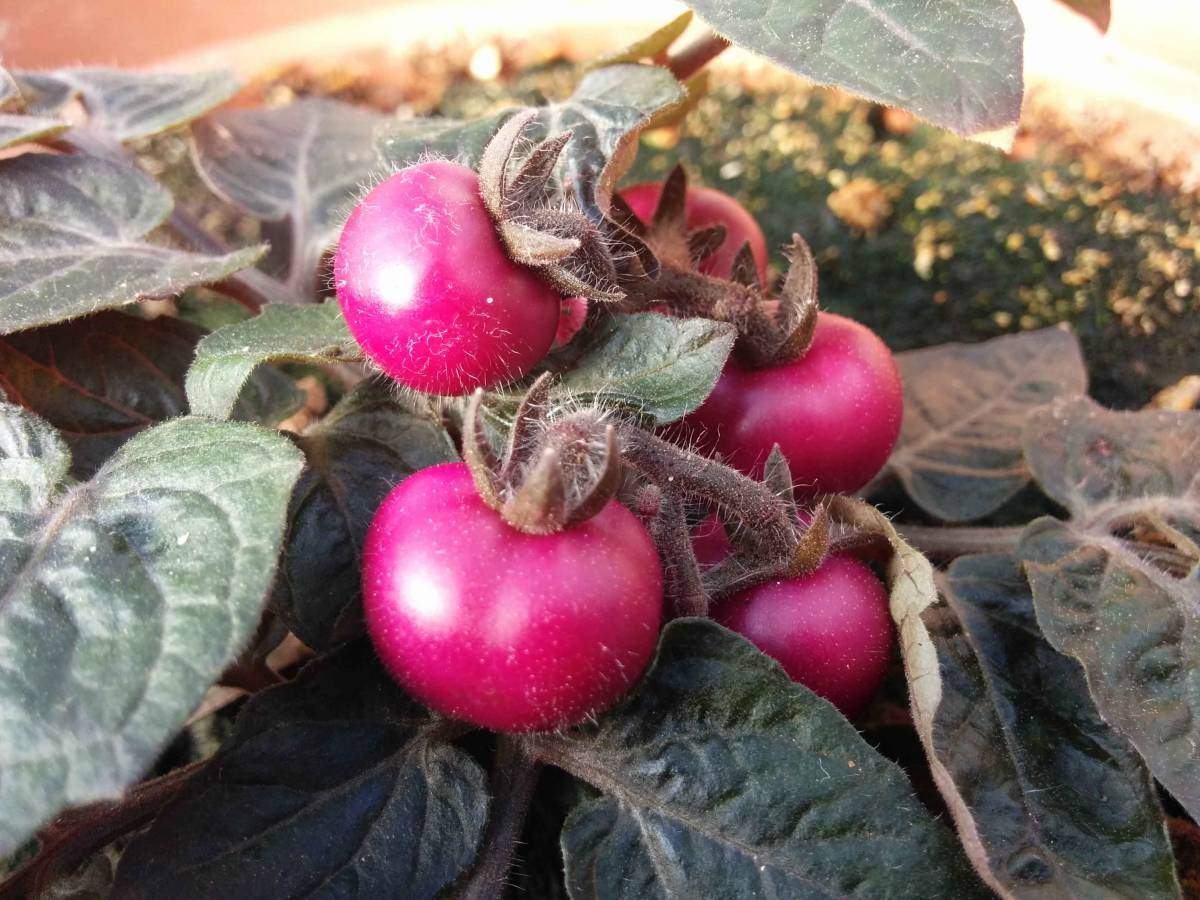Weizmann et Université de Jérusalem (Israël) : des pigments anti-cancer issus de légumes et fleurs OGM

[:fr]
La couleur de nos fruits et légumes est révélatrice des différents pigments qui la composent. Chacun de ces pigments possède des propriétés de grand intérêt pour le corps humain. Le Pr Asaph Aharoni et le Dr Guy Polturak de l’Institut Weizmann des Sciences en Israël a réussi à modifier génétiquement un grand nombre de légumes et de fleurs afin qu’ils produisent différents pigments possédant, notamment, des propriétés anticancéreuses. L’équipe de recherche comprenait également Noam Grossman, Yonghui Dong, Margarita Pliner et Ilana Rogachev du département des plantes et des sciences de l’environnement de Weizmann, ainsi que Maggie Levy, David Vela-Corcia et Adi Nudel de l’Université Hébraïque de Jérusalem.
La multitude des couleurs des végétaux qui nous entourent n’est pas uniquement le fruit de mutations aléatoires et fortuites qui ne trouvent d’utilité que pour le plaisir de nos yeux. Il a par exemple été mis en évidence que les pigments attirent les insectes pollinisateurs ou encore qu’ils protègent les végétaux de certaines maladies. Il existe trois catégories principales de pigments qui génèrent la quasi-totalité des couleurs du monde végétal : les anthocyanes, les caroténoïdes et les bétalaïnes. Chacune de ces familles présente des caractéristiques très particulières, incluant des propriétés antioxydantes, anti-inflammatoires ou anticancéreuses. Les pigments sont donc fort intéressants pour la communauté scientifique.
Le Pr Asaph Aharoni, le Dr Guy Polturak et ses étudiants se sont intéressés à une classe de pigments, appelée bétalaïne, présents notamment dans les betteraves rouges, les cactus, les bougainvilliers et bien d’autres végétaux. Ils ont observé deux plantes produisant des bétalaïnes : les betteraves rouges et les belles-de-nuit (Mirabilis jalapa). Après un travail méticuleux, ils ont pu retracer le gène permettant la production des bétalaïnes, ainsi que les mécanismes métaboliques conduisant à leur fabrication ; ceux-ci utilisent la tyrosine (un acide aminé) comme briques élémentaires.

Pour étayer et élargir leurs expériences, les chercheurs ont ensuite greffé le gène dans des levures pour leur faire produire, avec succès, la couleur désirée. Après ce premier test, ils ont greffé ce gène dans des tomates ou encore des pommes de terre et ont ainsi réussi à leurs donner différentes couleurs. Ils ont également réussi à contrôler la zone de production de ces pigments, limitant par exemple la couleur aux fruits de la tomate.
Cette découverte, qui pourrait sembler esthétique, s’avère d’une utilité certaine. La teneur en bétalaïnes accroît la valeur nutritive des fruits et légumes. De plus, ces pigments luttent activement contre le Botrytis Cinerea, une espèce de champignon (caractéristique des fraises trop mûres), qui détruit chaque année des végétaux comestibles à hauteur de plusieurs milliards de dollars. Enfin, les chercheurs sont également en mesure de produire à grande échelle ce pigment de façon économique ; une fois extrait, ce dernier permet de fabriquer des médicaments de première nécessité à forte valeur ajoutée.
Rédacteur : Samuel Cousin, post-doctorant à l’Institut Weizmann pour le BVST
Publication dans PNAS, 13 juillet 2017
Lire aussi : Betalains : properties, sources, applications, and stability
[:en]Color in the plant kingdom is not merely a joy to the eye. Colored pigments attract pollinating insects, they protect plants against disease, and they confer health benefits and are used in the food and drug industries. A new study conducted at the Weizmann Institute of Science, published in the Proceedings of the National Academy of Sciences, USA, has now opened the way to numerous potential uses of betalains, the highly nutritious red-violet and yellow pigments known for their antioxidant properties and commonly used as food dyes.
Betalains are made by cactus fruit, flowers such as bougainvillea and certain edible plants – most notably, beets. They are relatively rare in nature, compared to the two other major groups of plant pigments, and until recently, their synthesis in plants was poorly understood. Prof. Asaph Aharoni of Weizmann’s Plant and Environmental Sciences Department and Dr. Guy Polturak, then a research student, along with other team members, used two betalain-producing plants – red beet (Beta vulgaris) and four o’clock flowers (Mirabilis jalapa) – in their analysis. Using next-generation RNA sequencing and other advanced technologies, the researchers identified a previously unknown gene involved in betalain synthesis and revealed which biochemical reactions plants use to convert the amino acid tyrosine into betalains.

To test their findings they genetically engineered yeast to produce betalains. They then tackled the ultimate challenge: reproducing betalain synthesis in edible plants that do not normally make these pigments.
The success announced itself in living color. The researchers produced potatoes, tomatoes and eggplants with red-violet flesh and skin. They also managed to control the exact location of betalain production by, for example, causing the pigment to be made only in the fruit of the tomato plant but not in the leaves or stem.
Using the same approach, the scientists caused white petunias to produce pale violet flowers, and tobacco plants to flower in hues varying from yellow to orange pink. They were able to achieve a desired hue by causing the relevant genes to be expressed in different combinations during the course of betalain synthesis. These findings may be used to create ornamental plants with colors that can be altered on demand.
Resistance to gray mold rose by a whopping 90% in plants engineered to make betalains
But a change in color was not the only outcome. Healthy antioxidant activity was 60% higher in betalain-producing tomatoes than in average ones. “Our findings may in the future be used to fortify a wide variety of crops with betalains in order to increase their nutritional value,” says Aharoni.
An additional benefit is that the researchers discovered that betalains protect plants against gray mold, Botrytis cinerea, which annually causes losses of agricultural crops worth billions of dollars. The study showed that resistance to gray mold rose by a whopping 90% in plants engineered to make betalains.
The scientists had produced versions of betalain that do not exist in nature. “Some of these new pigments may potentially prove more stable than the naturally occurring betalains,” says Polturak. “This can be of major significance in the food industry, which makes extensive use of betalains as natural food dyes, for example, in strawberry yogurts.”

Furthermore, the findings of the study may be used by the drug industry. When plants start manufacturing betalains, the first step is conversion of tyrosine into an intermediate product, the chemical called L-dopa. Not only is this chemical itself used as a drug, it also serves as a starting material in the manufacture of additional drugs, particularly opiates such as morphine. Plants and microbes engineered to convert tyrosine into L-dopa may therefore serve as a source of this valuable material.
The research team included Noam Grossman, Dr. Yonghui Dong, Margarita Pliner and Dr. Ilana Rogachev of Weizmann’s Plant and Environmental Sciences Department, and Dr. Maggie Levy, Dr. David Vela-Corcia and Adi Nudel of the Hebrew University of Jerusalem.
Publication in PNAS, July 13th, 2017
[:]







